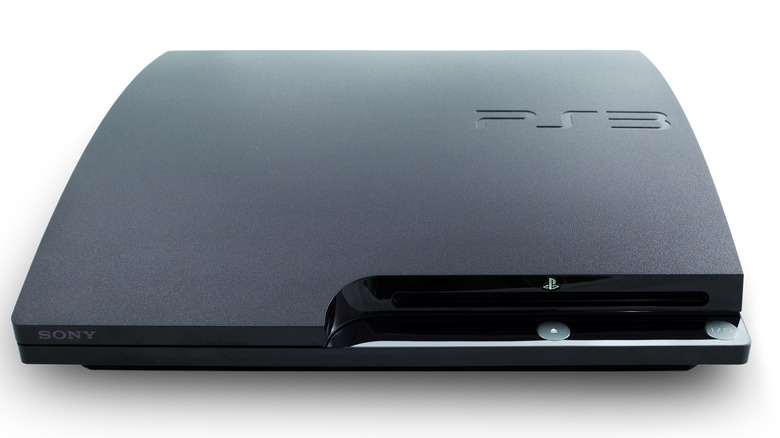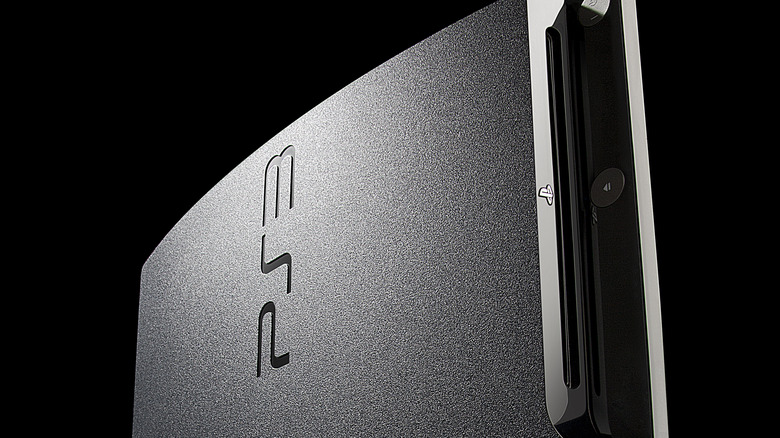How The US Military Used Sony's PS3 To Build One Of The World's Biggest Supercomputers
The Sony PlayStation 2 took its place as one of the most legendary video game consoles of all time from 2000 to 2013, hosting numerous classic games and becoming a worldwide favorite. Thus, it set a high bar for its successor, the PlayStation 3, when it was released in 2006. While it never quite reached the PS2's heights, the PS3 did incredibly well, providing several notable games, a bevy of apps, and even some now-forgotten features that are pure nostalgia to become iconic in its own right. The U.S. military even used it to create a supercomputer.
Back in 2010, as the PS3 was cementing its legacy as a video gaming powerhouse, the U.S. Air Force used the console as the basis for a versatile computing tool. Known as the Condor Cluster, the core of this Rome, New York-based supercomputer was comprised of a whopping 1,760 PS3 consoles. 168 graphical processing units and 84 coordinating servers. This endeavor cost approximately $2 million, which may seem like a lot, but in reality only cost a small fraction of what building a similar system using off-the-shelf computer components would've run. Not to mention,it only took up a small percentage of the power supercomputers of the time consumed.
With almost 2,000 PS3 consoles behind it, the Condor Cluster was capable of handling a range of important tasks.
The capabilities of the Condor Cluster
Clearly, the U.S. Air Force had a lot of faith in the PlayStation 3. Between the comparatively lower cost of a supercomputer alternative and the lower energy use, it was a no brainer to use the gaming console for the Condor Cluster. Of course, the big question is, what exactly did the device do? With the ability to perform 500 trillion floating point operations per second, it quickly became the fastest interactive computer in the entire US Department of Defense and could handle a variety of computing tasks.
With the Condor Cluster was completed on Dec. 1, 2010, the Air Force put it to use in a host of settings. It could enhance military radar technology, establish pattern recognition, process images from government satellites, and even aid in the then-early development of artificial intelligence. Additionally, thanks to the cutting-edge imagery technology within the PS3 and the cluster's enhanced algorithms, it could identify objects moving through space that were previously difficult to discern. The Condor could also use its impressive speed to quickly analyze ultra-high-resolution images.
Despite coming in handy for various assignments, the effectiveness and usefulness of the Condor Cluster eventually diminished.
What became of the Condor Cluster?
Almost 15 years have passed since the Condor Cluster launched, though it didn't get nearly that length of mileage. Ultimately, the U.S. Air Force's PlayStation cluster program concluded by 2015 as a result of two major factors. First were changes to the PlayStation 3 consoles themselves, as newer, slimmer models lacked the ability to run Linux, which was essential to the supercomputer and all of its functions. With older models being outmoded and in short supply, it became harder to move the project forward.
Second and just as important to note is the creation of the PS3's successor, the PlayStation 4. The console launched alongside Microsoft's Xbox One in November 2013, though it came with similar hardware limitations as the slim PS3s. It simply didn't lend itself to building the foundation of a supercomputer. "There's nothing novel about the PlayStation 4, it's just a regular old PC. We weren't really motivated to do anything with the PlayStation 4," explained researcher Gaurav Khanna, according to The Verge. At least there are still some good uses for an old PS4. Nevertheless, its introduction contributed to the end of the military's interest in converting Sony's gaming consoles into supercomputers.
In the end, the Condor Cluster was disassembled, with some consoles being donated to smaller supercomputers while others were sold as excess inventory. Now years beyond its brief moment in the Sun, the U.S. military's unique supercomputer has become little more than a fascinating footnote in the PS3's history. Meanwhile, scientists are now looking into next-gen supercomputers featuring real brain cells, so it's safe to say the scientific world has come a long way since the days of the PS3 cluster.


